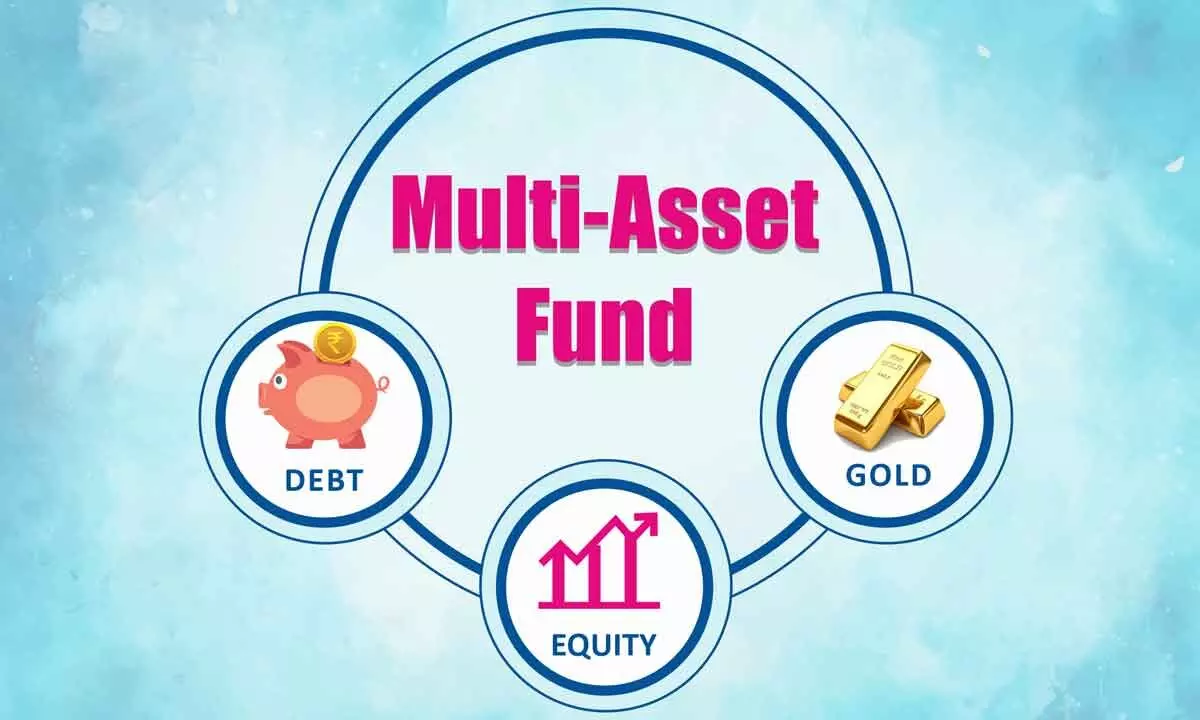Multi asset funds could be apt investment option now
These funds explore investing across different asset classes like equity & debt in the market, gold through gold ETF, and real estate via REIT & InVIT
image for illustrative purpose

Most of the multi asset funds being operated in this space are equity-oriented meaning the allocation to equity and related instruments stand at a minimum of 65 per cent making it attractive on the taxation front
The equity markets may not be making newer highs but have remained without a major correction in almost two years. Though the volatility remained it hasn’t seen the vagaries that otherwise are associated with typical markets. This is particularly true since the pandemic dip when markets have lost about half of their value. Also, ever since that event, there has been a tremendous interest to participate in the equity markets among Indians.
The new set of investors haven’t experienced the jostle that usually is accompanied with the equity markets, it has been mostly a one-way direction excepting for a brief volatile period around the Ukraine war and during the Hindenburg revelations.
The macro-economic situation of India has never been as attractive. The twin deficits (fiscal & current) are under manageable levels, easing inflation, continued inflows of Foreign Direct Investments (FDI), increasing interest by the Foreign Institutional Investor (FII), the rich demographic dividend, stable government, improving infrastructure and alleviating poverty along with rising consumption.
This has resulted in buoyancy in the returns for the investors and their increased expectations into the future possibilities. This has been evident in the continued flows into small- and mid-cap stocks or funds relative to their larger peers. History, however, shows that such high levels resulted in modest to negative returns in the following years. That could expose investors to a non-liner risk which they are not prepared for. So, how should one approach the current markets particularly when the macro environment seems to play in favour of riskier assets?
Inarguably, equity is the best bet for wealth creation in the long run but the proportion of allocation should be in tandem to the investors’ risk appetite and their goals. Any mismatch in this could result in adverse outcomes. This thus puts a predicament in the investor’s mind, certainly being in markets is important but how to ensure that they’re adequately balanced remains the key. This is where asset allocation comes into play. This is arrived through an appropriate risk assessment by creating a proper risk profile of the investors. One could always sway by the past performance of equity but should also keep an eye on the risk that’s being transferred on to the investors through this exposure. The markets participants go through emotions of extreme despair and euphoria as the market cycle migrates through fear and greed, respectively.
In times of euphoria, investors could sidestep their investment philosophy or overstep their risk profiles causing significant errors of judgement leading to improper asset allocation. Multi-asset funds (MAFs) try to address this need by allocating across multiple asset classes.
SEBI (Securities and Exchange Board of India) also has made a categorisation to this effect so that they could be distinguished from the generic hybrid category. These funds explore investing across different asset classes like equity, debt, gold, real estate, etc. there by generate capital appreciation to the investors.
As per the definition by SEBI, a fund which invests in at least three asset classes with a minimum of 10 per cent in each asset class is classified as a multi-asset fund. While it’s simple to understand the equity and debt investment exposure by stocks and bonds respectively, the gold is achieved through investing in a gold ETF (Gold Exchange Traded Fund), real estate through REIT (Real Estate Investment Trusts) and InVIT (Infrastructure Investment Trusts). The latter both options are listed on the exchanges. Also, the fund has the flexibility to operate among the assets while changing the allocation which the fund manager deems better suited with respect to the prevailing investment environment.
Most of these funds being operated in this space are equity-oriented meaning the allocation to equity and related instruments stand at a minimum of 65 per cent making it attractive on the taxation front. There are also offerings on the debt-oriented multi-asset funds, albeit limited. The current debt cycle, ie, the interest rate could be at the peak and could reduce in the coming quarters making it attractive for the accrual strategy, also this favors gold and real estate. The distributed allocations to other assets not only act as a hedge but could prove profitable in the evolving conditions.
While these are not panacea in addressing the investor dilemma, these funds certainly help in mitigating the risk, thus making a case for a place in the core portfolios.
(The author is a co-founder of “Wealocity”, a wealth management firm and could be reached at knk @wealocity.com)

